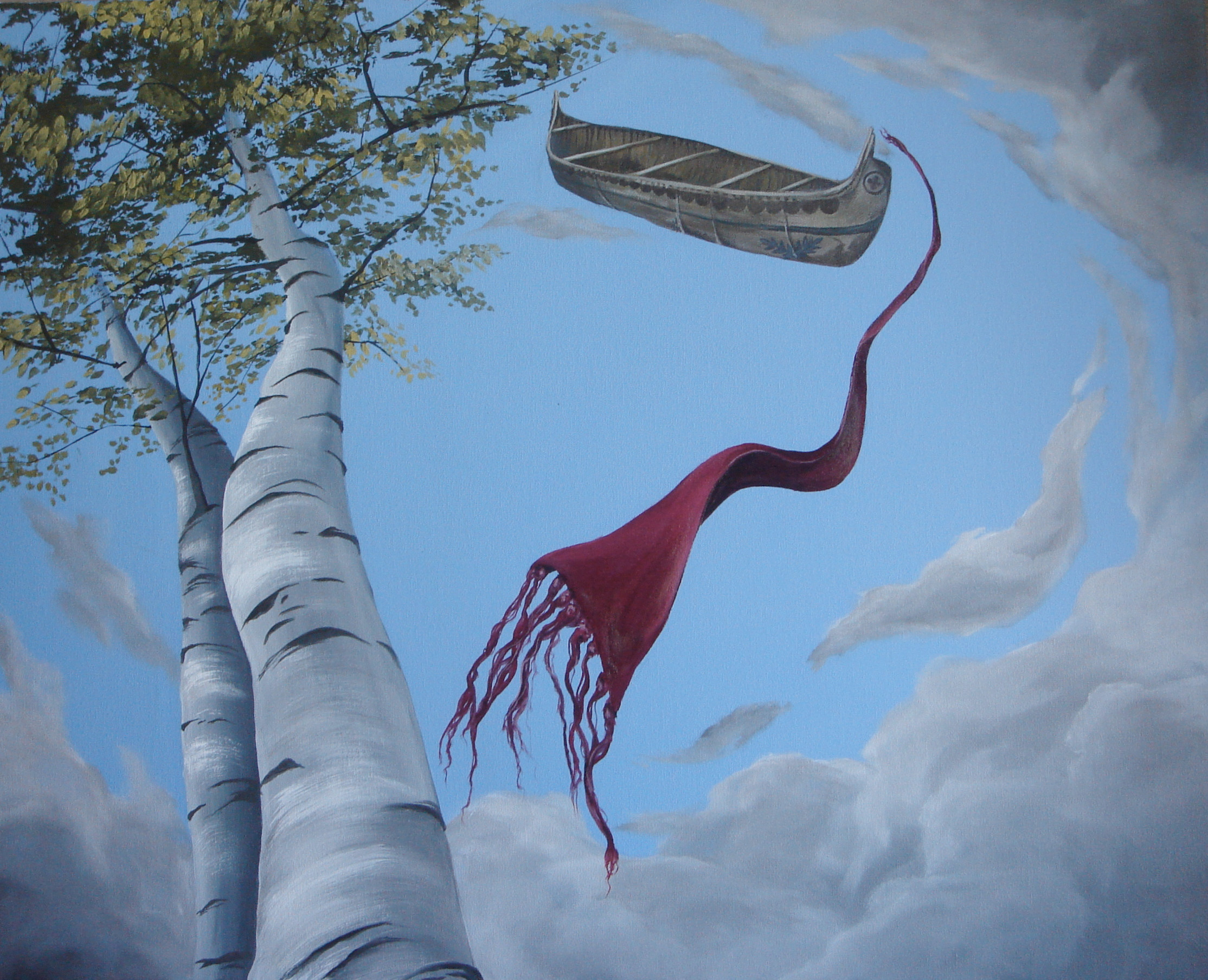HOME | DD
 The-Nomadic-Project — One Fur Trade
The-Nomadic-Project — One Fur Trade

Published: 2006-09-03 18:03:27 +0000 UTC; Views: 712; Favourites: 10; Downloads: 18
Redirect to original
Description
One Fur Trade30 x 24"
acrylic on canvas
Kavanaugh Gallery, Des Moines, IA
When you think of Minnesota, it is easy to relate to the “Twin Cities” and envision a large spoon and cherry sculpture. Or maybe thoughts of one thousand lakes fill the mind, but what about fur trading? Those who have visited Voyageurs National Park, in the Northeast portion of the state, understand what the painting titled “One Fur Trade” refers to. For those that have never been, here’s a history lesson!
Before getting into the role of the Voyageurs, the double-trunk birch tree does represent Minnesota’s “Twin Cities.” With that said, it plays an important role in the story that follows. Jacques de Noyon was the first French trader known to reach the Rainy Lake Region in 1688; however, it wasn’t until around the 1730’s that the area became known for fur trading. Fur was heavily desired in European fashion, and acquiring beaver pelts from the Native American tribes became a profitable business. French voyageurs set out from Canada on birch bark canoes to trade supplies with the Sioux, Cree, and Ojibwa Indians. The men always dressed for the environment and all weather conditions, yet lived short lives, due to the backbreaking labor.
Each article of clothing warn by the Voyageurs had a purpose during the long excavations. Their oversized fabrics afforded comfort and relief from pestering insects. The bright red scarf, as shown in “One Fur Trade,” was typical as it acted like a modern day weightlifting belt, preventing hernias. The Voyageur crews of eight rowed an average of twenty hours a day, however stopped frequently (every fifteen minutes) to smoke a pipe. This ritual became a common measure of time and distance traveled. The men met with locals to exchange supplies, as beaver pelts began acting as a monetary system for the Native Americans. An example of the exchange rate would be, one deer for half a beaver pelt and a gun equal to sixteen beaver pelts.
In “One Fur Trade,” the vision for the flying canoe came about after experiencing the dramatics of Minneapolis. In August, there is a Fringe Festival where 876 performances are displayed in eleven days. Twenty-three Minneapolis venues participate, and it is the largest non-juried performing arts festival in the U.S. Coincidentally, while researching birch bark canoes, a legend of the “Flying Canoe” came up. It is an interesting Passamaquoddy story that is worth the read, but not the inspiration for this piece!
Kavanaugh Art Gallery
View and purchase "One Fur Trade" at Kavanaugh Gallery in
Des Moines, Iowa
Related content
Comments: 7

I love the angle of this shot! There's so much movement, and even though the proportions seem right, the whole things looks delightfully warped, as well!
Excellent job!
👍: 0 ⏩: 1

Delightfully warped . . . love it! Thank you for such an insightful comment!
👍: 0 ⏩: 1

No problem! I absolutely love it!
👍: 0 ⏩: 0

Thanks for your kind words!
👍: 0 ⏩: 0




























